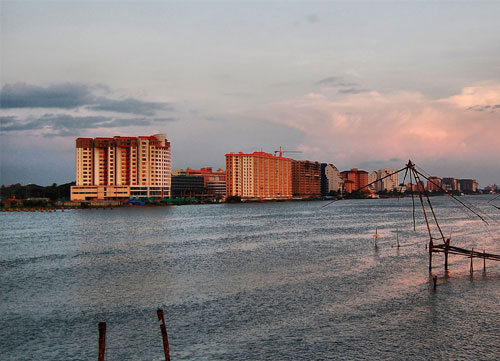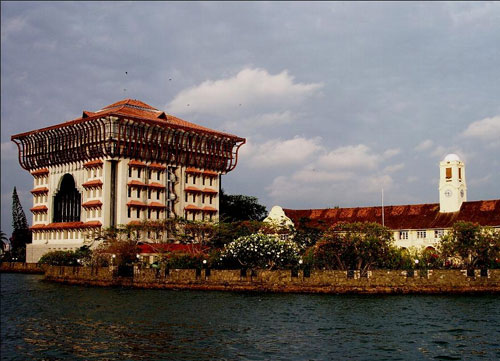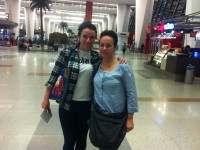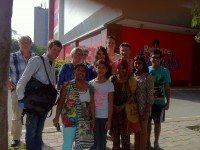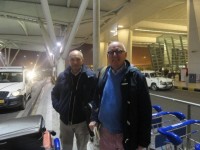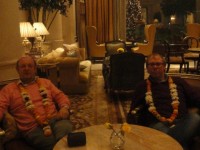
COCHIN
Cochin: The commercial capital of Kerala. One of the natural harbors in the world, Kochi, renowned as the “Queen of the Arabian Sea’ was once a major center for commerce and trade. The British, Arabs, Chinese, Portuguese, Dutch etc., have all come to its shore in search of exotic spices and sandal wood. Even today Kochi continues the tradition of welcoming visitors with its customary warmth and hospitality.
Connectivity
Cochin is well connected to all the major cities of India through air, rail and road.
By Flight
Cochin International Airport is towards north of Cochin, approx 33 km from the new City known as ‘Ernakulam’ and approx. 45 kms from the Heritage twin cities Fort Cochin & Mattancherry, which are located at a distance of 3 km from each other. Cochin airport is well connected to all International Airports and almost all Middle East and Asian carriers operates from Cochin. Equally good is the Domestic connections across India viz Delhi, Mumbai, Hyderabad, Chennai, Bangalore and Kolkata etc. The Airlines that ply to and from here are Indian Airlines, Jet Airways and Go Air, Spice Jet etc. Internal connections are also available with the major cities of the State viz Thiruvananthapuram, the State capital & Capital and to Kozhikode, the gateway Northern Kerala.
By Train
The city has two major railway stations – Ernakulum Junction and Ernakulum Town (locally known as the South and North railway stations respectively). It is connected to Delhi and all main cities viz. Mumbai, Pune, Goa, Bangalore, Hyderabad, Kolkata, Coimbatore, Chennai, Jamshedpur, Nagpur, Gurgaon, etc. in India
By Road
Kochi is well connected to neighboring cities and states via several highways. The NH 47 connects Salem to the city of Kochi via Coimbatore, Palakkad and Thrissur and is part of the North-South Corridor of India’s National Highway System. NH 66 connects Kochi with Panvel near Mumbai and passes through major junctions like Edappally and Vytilla in the city.
Festivals
Apart from some usual festivals that are celebrated throughout India like Diwali, Holi, Christmas, Ramzan, Bakrid, Sreekrishna Jayanathi, Kerala/Kochi also has its own festival it celebrates very traditionally. During these festivals, many locals wear their ethnic dresses, decorate their homes and perform the traditional folk art forms. Cochin festivals and fairs provide you a vivid glimpse of the local social customs and traditions while you romp around during the sightseeing spree. The States National harvest festival, ‘Onam’ & ‘Vishu’ New year festival of the Saka Era (Malayalam calendar ) is also celebrated with great fervor and joy. If there is one festival the whole of Kochi impatiently awaits every year, then it’s the Cochin Carnival held in the last week of December. Fort Kochi is decked up like a bride and tourists, not only from within the country, but also outside, flock to this lovely port city to participate in the revelry.
Jewish Synagogue Located at Mattancherry, this is the oldest synagogue in the commonwealth. It is noted for its mid 18th century, hand painted, willow patterned floor tiles from canton in china, a Clock tower, and Hebrew inscriptions on stone slabs, great scrolls of the Old Testament, ancient scripts on copper plates etc.
Santa Cruz Basilica This historic church was built by the Portuguese and elevated to a Cathedral by Pope Paul IV in 1558.
In 1795 it fell into the hand of British when they took over Kochi, and was demolished. About a hundred years later Bishop Dom Gomez Ferreria commissioned a new building at the same site in 1887.The church was proclaimed a Bascilica in in 1984 by Pope John Paul II.
Dutch Palace The Mattancherry Palace is a Portuguese palace popularly known as the Dutch Palace, in Mattancherry. Kochi, in the Indian state of Kerala features Kerala murals depicting Hindu temple art, portraits and exhibits of the Rajas of Kochi. The Palace was built and gifted by the Portuguese as a present to the Raja of Cochin around 1555. The Dutch carried out some extensions and renovations in the palace in 1663, and thereafter it was popularly called Dutch Palace. The rajas also made more improvements to it. Today, it is a portrait gallery of the Cochin Rajas and notable for some of the best mythological murals in India, which are in the best traditions of Hindu temple art.



